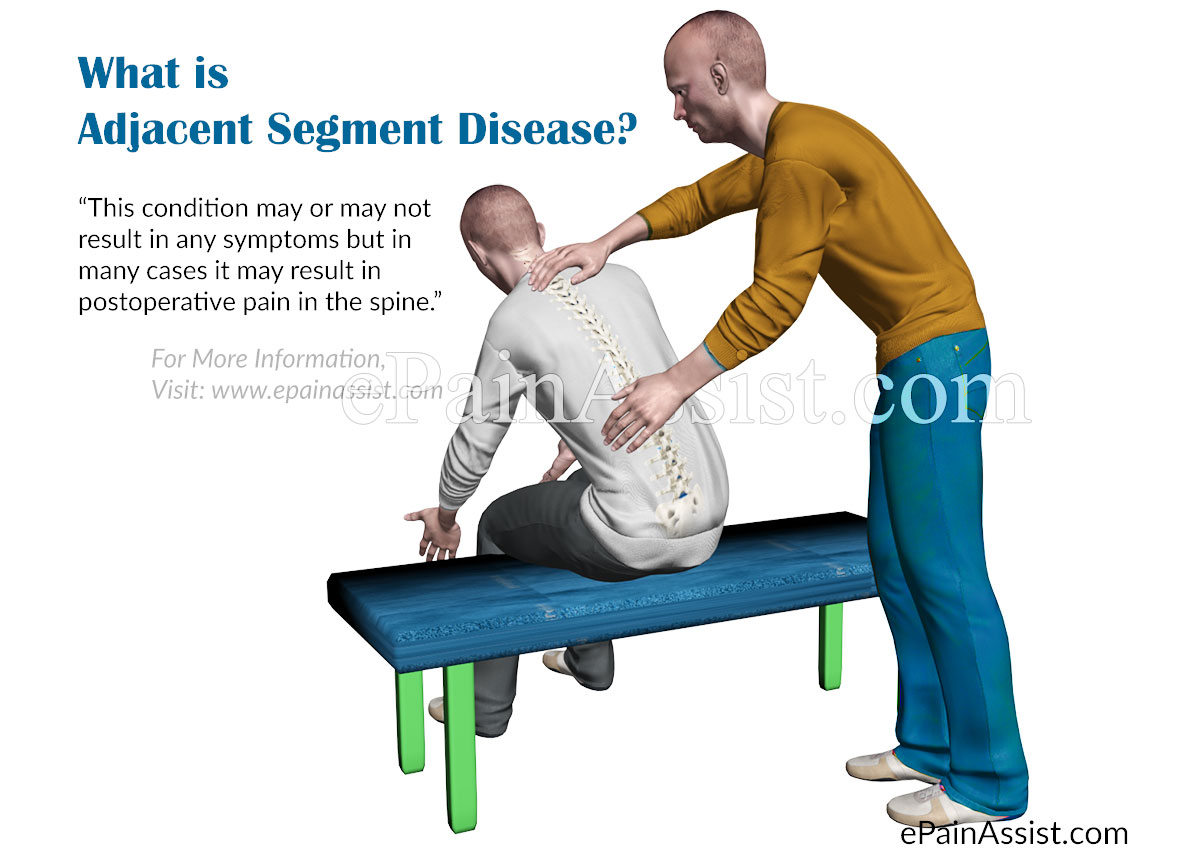What is Adjacent Segment Disease?
At present, there is no clear cut or accurate definition of an Adjacent Segment Disease, although literature throws up certain definitions but they are all quite varied. Adjacent Segment Disease refers to a condition in which after a cervical or lumbar spinal fusion, the levels adjacent to the fused level show degeneration which are readily seen radiographically. This condition may or may not result in any symptoms but in many cases it may result in postoperative pain in the spine.(1) The question here arises that is Adjacent Segment Disease a cause of simple degeneration of the spine or is it due to the fusion of the adjacent level or levels which have put excessive stress on the adjacent level or levels for which the answer is not confirmatory and research is still going on.

How Common is Adjacent Segment Disease in Patients Who have Undergone Spinal Fusions?
Studies have shown that quite a few percent of patients who underwent fusion procedures to treat neck or back pain and radiculopathy have gone on to develop Adjacent Segment Disease.(2) To be precise studies suggest that approximately 3% of patients who underwent cervical or lumbar spinal fusion procedures have developed Adjacent Segment Disease in the first 10 years postsurgery. Around 24% have developed Adjacent Segment Disease after about 5 years postsurgery.
Do All Spinal Fusion Patients Develop Adjacent Segment Disease?
It is well known that any fusion procedure done to the cervical or lumbar spine puts additional pressure on the adjacent level or levels of the fused spine, but Adjacent Segment Disease is seen more in people who have other risk factors like arthritis or other condition which predispose them to disc degeneration or disease even though with time disc disease and degeneration is a problem that has to comprehend with.
What is the Role of Fusion Surgery in Development of Adjacent Segment Disease?
Some researchers have pointed out that during the fusion procedure, if there is some sort of damage done to the structures of the spine, it leads to increased incidences of Adjacent Segment Disease, especially people who have undergone ACDF procedure to the cervical or lumbar spine.(3) The risk also increases significantly if the disc is incorrectly localized during surgery.
Are There Any Methods to Reduce the Risk of Development of Adjacent Segment Disease?
In order to decrease the risk of a patient developing Adjacent Segment Disease after a fusion procedure the following steps are extremely important:
- Accurate radiographic studies are important in the form of 3.5 tesla MRI scan which can provide better picture of the involved disc and hence it can be localized accurately during the procedure.
- In order to localize the disc during procedure it is always better to insert the needle into the vertebral body and not into the disc so as to prevent any damage to a perfectly fine disc.
References:
